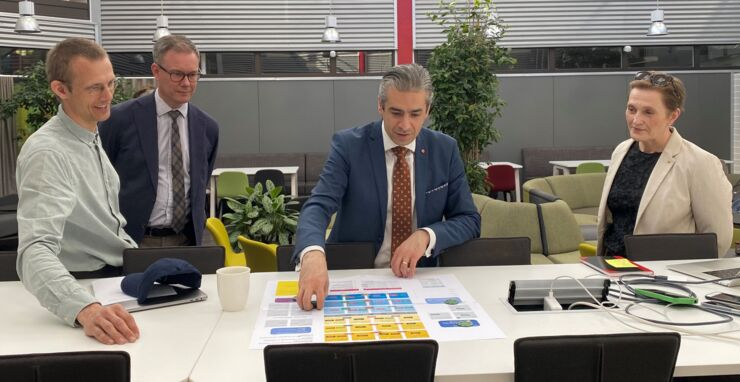Let me introduce myself: my name is Magnus Persson, and I’m lead game designer of the Changing the Game of Consumption megagame, which is created to communicate the results of the Mistra Sustainable Consumption research project. If you found this introduction oddly familiar, it may be because I’m also lead game designer for the Switching the Current megagame, which I’m also blogging about – in fact, some parts of this post are very similar to parts of the first post of that blog. In this first post, I won’t discuss game design as much as the purpose of this blog and what can be gained from blogging while designing a megagame – and more specifically why I keep a separate blog for each game I’m designing rather than just throwing it all into a single one.
The reason we have chosen to use a game to communicate research results is, in the words of Claude Garcia, that we want people (or in this case players) to “[rather than] negotiating about the world [they] want, [negotiate] about what’s available”, as we believe this will help them “understand the issues faced by other players”. This is particularly important in a project where we are attempting to communicate not only ‘hard facts’ about sustainable consumption, but dealing with emotions related to learning more about what a sustainable lifestyle may look like in the future and trying to prepare for what the road towards that lifestyle is going to look like – not merely as individuals, but as a society. We hope that people playing the megagame will have an opportunity to see things from a variety of perspectives and based on that experience and both make wiser and better-informed decisions in the future and use their insight to help others do the same.
This is not the first time I’m involved in megagame design – I was lead game designer for the Climate Change Megagame (CCM) that was played for the first time in November 2020. I won’t go into the background of that game here, but simply note that I learned that, following the conclusion of the design phase, it was very, very difficult to remember the thoughts that guided me through the steps of the design process that led to the final version of the game. Thus, I’ve chosen to use this blog to help me record my thoughts along the way and enable reflection on the choices made based on the information I had at the time and not only in hindsight. Although the latter may be preferable in some cases, I’m more interested in getting insight into what the design process looks like from the game designer’s perspective while they are in the ‘midst of the fray’, and I’m guessing I’m not the only one.
This blog is meant to function as a research journal that will allow me to reflect on both my thoughts and ideas during the game design process and how and why I made the choices I made after the design process is concluded. It is also a way to allow members of the Changing the Game of Consumption project group and stakeholders in the Mistra project to stay up to date with the game design process and encourage them to contribute to it between meetings. Moreover, it is intended to give game designers insight into the process of designing a megagame. Regardless of your interest in my blog, I hope you enjoy it and learn something from reading it!
So, why one blog for each game? First of all, as they belong to two different projects, keeping them apart means less ’spam’ for the members of both projects (and indeed anyone who is interested in only one of the projects) and an easier time summarising my reflections at the end of each project. Secondly, at the outset it seems to me the games will be quite different in character and so, as the designs are already going to influence one another due to coexisting in my brain, I feel it is necessary to keep them separated to help me focus on reflecting on one in light of the other rather than on both at the same time. Thirdly, I suspect that there’s a lot to learn from comparing the posts of the two blogs – an aspect of the research project that I will happily hand over to the researchers I’m working with, should they be interested.
In the next blog post, I intend to write about what comes to mind when I study a game-like discussion/negotiation exercise that the Mistra research team has already constructed in order to see if and how I can use an existing structure to create an idea for a megagame. To my help I have Jim Wallman’s excellent guide to megagame design, about which I will also write some more in that post.
– – –
Would you like to know what others say about blogging about your research? I recommend reading Janet Salomons’s very insightful post Share Your Research on a Blog, which helped me define the purpose of this blog (I believe it to be a combination of solo/researcher-to-public and collaborative/researcher-to-researcher, but I may well be wrong). Mark Carrigan’s insightful Prezi Using your blog as a research journal gave me a lot of food for thought on what to do with my blog and how to do it, and Duncan Green’s An antidote to futility: Why academics (and students) should take blogging/social media seriously made me confident that this is the right approach – and convinced me to try to keep my posts relatively short, for the sake of both myself and my readers.

